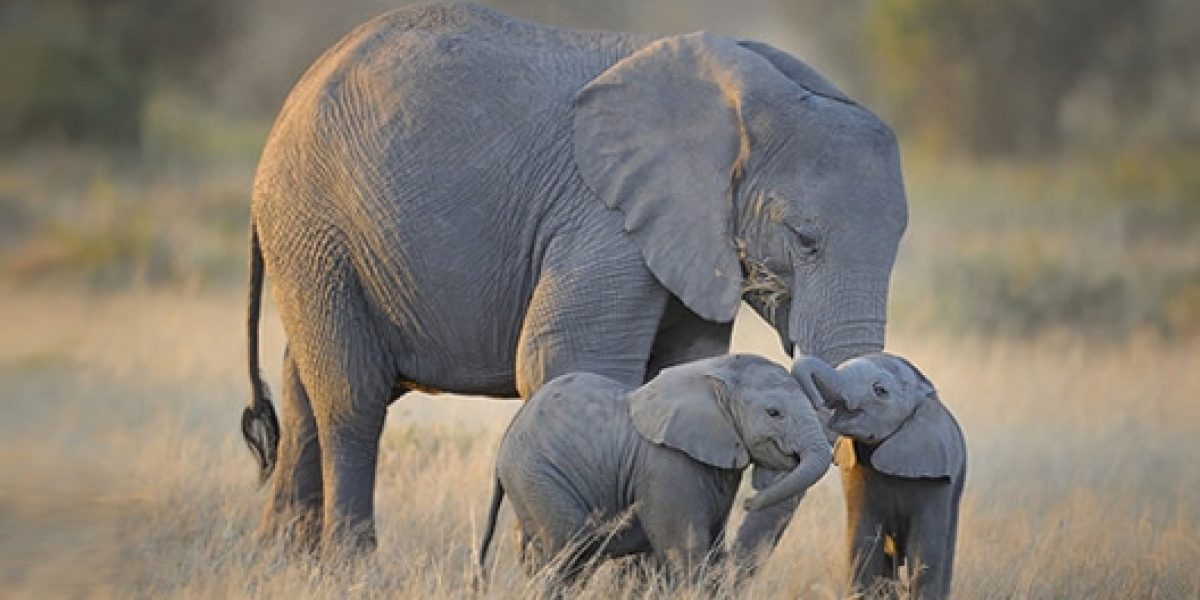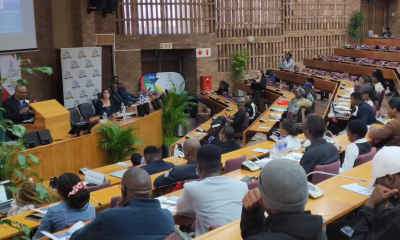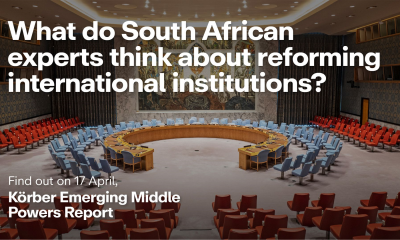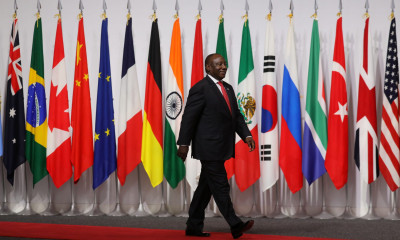It is difficult to ascertain whether these kinds of raids indicate that law enforcement on distribution routes between Africa and the Far East is improving, or whether busts are simply increasing with poaching rates.
Either way, the available evidence suggests that elephant populations across Africa are in rapid decline, threatening the minimum viable population level in many areas. Hardest hit are Central and West Africa, with poaching syndicates now moving eastwards (Kenya and Tanzania) and southwards (Mozambique, Zimbabwe, South Africa, Botswana and Namibia).
On 12 August, World Elephant Day marks an important occasion to reflect on this untenable situation and what can be done about it. Over 100,000 were illegally killed between 2010 and 2012. Poaching syndicates appear to be winning the war, though conservationists and law enforcement officials win occasional battles (like the Zurich bust).
A new SAIIA paper, Preserving the African Elephant for future generations, argues that there are three major components to the threat facing African elephants.
The first is escalating demand for ivory in the rapidly growing economies of Asia, especially as the size of the middle class expands.
Read the new SAIIA paper, Preserving the African Elephant for future generations.
The second is that criminal syndicates exploit this demand and legal domestic trades (the international trade is banned) to sustain the trade. Excellent recent news in respect of the latter is that the Chinese government has announced that it will ban the domestic trade in ivory. Implementing this ban effectively is the next big challenge, and China has called on the United States to follow its lead. Experts suspect that elephant ivory is illegally traded in the US under the cover of the legal trade in mammoth ivory. CITES (The International Convention on Trade in Endangered Species) does not regulate trade in the products of extinct species like mammoth.
The third aspect of the threat is that in weak states with competing development priorities and limited resources, elephant conservation is not necessarily treated as a priority. This also speaks to the challenge of overcoming the coordination failure between African elephant ‘range-states’.
At present, South Africa and Zimbabwe want to be allowed the option (under CITES) of selling naturally accruing ivory (from official stockpiles) in future one-off sales. But most other range states are opposed to this, knowing that sending ambiguous supply signals to demand markets ultimately fuels further poaching. Most African elephant range states have signed up to the Elephant Protection Initiative (EPI), which aims to close domestic ivory markets and observe a moratorium on any consideration of international trade (even one-off sales) for a minimum of ten years or until elephant populations are no longer under threat.
However, South Africa, Namibia and Zimbabwe have yet to do so, preferring instead to retain the option of potential future stockpile sales. Syndicates exploit these differing national approaches to the trade question; hence the need for more united collective action. South Africa is hosting the next CITES Convention of the Parties (CoP17) meeting in October 2016. Its reputation for pioneering innovative conservation strategies would be well served by signing up to the EPI.
The SAIIA paper uses a simple game theory model to demonstrate which strategic efforts would gain the highest returns in addressing these three components of the threat. It shows that while efforts to ban domestic trade in consumer markets are crucial, the two dominant strategies are demand-reduction and poaching prevention.
Read a Daily Maverick article explaining the key recommendations of the SAIIA paper, Study calls for domestic trade bans and projects to cut demand for ivory.
Effectively enforcing a ban in a domestic market like China can take a long time, especially given the sheer extent of demand and the differentiated range of ivory products available. Therefore, demand reduction campaigns are crucial. If consumers are forced to make the connection between their purchases and the plight of elephants, the poaching rate is likely to diminish. Demand reduction would simultaneously help to improve anti-poaching efforts, as the scale and sophistication of syndicates’ efforts would necessarily be reduced. However, demand reduction is not to be confused with mere awareness or information campaigns. It has to be targeted at specific segments of the consumer market. The most efficient allocation of capital would be to reduce demand where the marginal utility of consumption is highest. If those currently paying very high prices for ivory are persuaded that their consumption fuels poaching, their consequent refusal to purchase could send ivory prices plummeting. This would reduce the incentive to poach significantly.
Successful poaching prevention is about improved sophistication and intelligence on the ground in range states, but it has to be complemented by collective action (as argued above). The sooner all range states sign up to the Elephant Protection Initiative, the better. A house divided on trade is unlikely to stand. Range states need to send an unambiguous signal to the market that the trade in ivory is over. Part of that means placing all stockpiles beyond commercial use (rather than keeping them in the hope of one day being able to sell them).
Finally, the importance of elephants for generating tourism revenue in range-state countries cannot be overstated. But this revenue has to accrue to local communities if those communities are going to be barriers against poaching rather than conduits for it. Elephants provide significant ecological benefit to their habitats, and their preservation is also a sustainable form of income generation.
If we are to secure a future with African elephants, demand for their products has to be effectively reduced, poaching efforts made more effective, and sustainable development plans built for local communities that are at the forefront of protecting these magnificent beasts.








